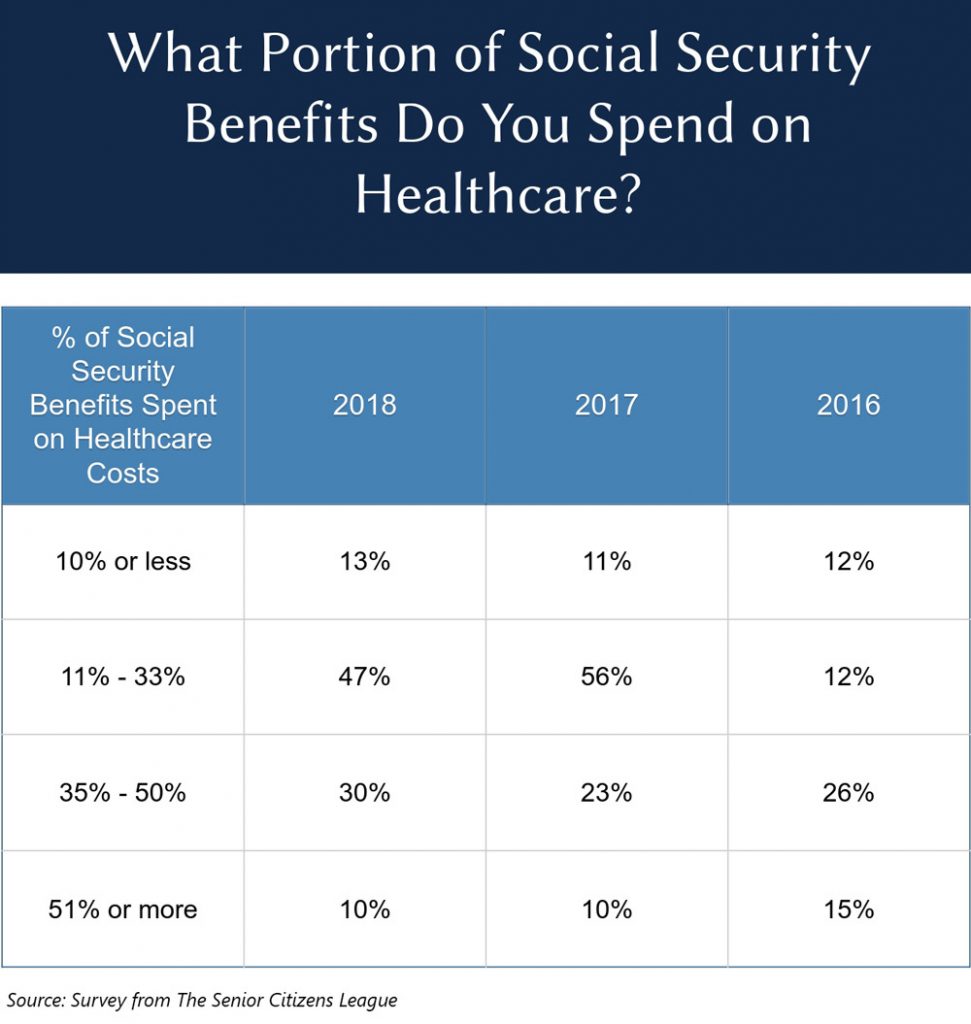The number of retirees spending one-third to one-half of their Social Security benefits on health care costs rose significantly in 2018 and is likely to decline next year, but the respite will be only temporary.
According to a survey from The Senior Citizens League, 30% of the 1,161 retirees surveyed — most over 70 — are spending 35% to 50% of their Social Security benefits on health care, which includes Medicare Part B and Supplemental (Medigap) or Medicare Advantage coverage. In 2017, just 23% of retirees spent as much for roughly the same coverage.
(Related: Health Care Costs Eat Up Big Chunks of Social Security Benefits)
“The increase is due in large part to the effects of a zero and excessively low cost-of-living adjustment (COLA) in 2016 and 2017 … when Medicare premiums and out-of-pocket costs like prescription drugs were climbing steeply,” said Mary Johnson, a Social Security and Medicare policy analyst at the league, in a statement. The Social Security COLA rose 0.3% in 2017 following no increase the previous year.

Johnson expects 2019 will be an improvement over 2018 in retirees’ health care cost burden, but only a short-lived one.
“There should be more retirees paying 11% to 33% of their Social Security benefits on health care and fewer paying 35% to 50% in 2019,” Johnson told ThinkAdvisor, noting that the 2019 COLA will more than cover the expected increase in health care coverage costs.
The Social Security COLA is expected to rise 2.9%, according to an updated outlook from The Senior Citizens League — marking the biggest jump in seven years — while the premium for Medicare Part B, which covers doctors and hospitals, is expected to rise by only $1.50, or 0.01%.
(Related: Social Security COLA Could Top 3% in 2019)









 August 10, 2018 at 01:50 PM
August 10, 2018 at 01:50 PM











